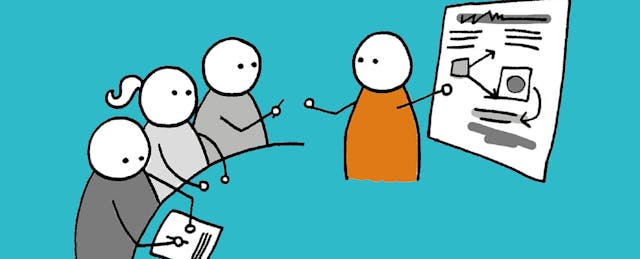In the pursuit of helping all students reach their fullest human potential, schools are increasingly seeing the need to personalize learning to meet each student's distinct learning needs. The challenge though is implementing personalized learning at scale in a school. In the absence of having a tutor for nearly every student, it's not easy to meet each student's distinct needs.
Schools and districts are turning to blended learning to personalize learning at scale. There are exemplary models worth seeing—from Summit Public Schools to schools using Teach to One, to districts enjoying success with Education Elements. But the challenge isn't simply to mimic what one sees, but to design the right set of experiences for a school’s particular students and teachers.
Rather than simply stealing or adapting ideas from others, we recommend starting at the beginning of the process with an open slate, and designing a blended-learning model to meet students’ specific needs.
The first step in that design process is to identify a problem to solve or a goal to achieve. Some problems relate to serving mainstream students in core subjects—such as boosting reading or math attainment—whereas others arise in areas of what we call areas of nonconsumption—areas in which schools cannot offer a particular course or educational experience. Both are worthy of innovation. In either case though, the problem or goal must not be about simply deploying technology for technology's sake, but instead to produce a specific, measurable learning outcome that will allow the organization to unambiguously know what success is and if it has been realized.
With the problem identified, the next step is to assemble the right team from across the school or district to tackle the problem. Some problems will benefit from having small teams of teachers tackle them so as not to create unnecessary bureaucracy; others will require having a group of people come together from across the schooling community so that they have the ability to rethink the use of time and space in school.
After the right team is in place, it is time to design. The starting point is to look at school from the eyes of the students to understand what they are trying to accomplish and what motivates them. When schools get the design right from the students' perspective, such that students feel that school aligns with the things that matter to them, they show up eager to learn. This means not only understanding what students are trying to accomplish, but also understanding the experiences they need to get those jobs done, and then assembling the right resources and integrating them together in the right way to deliver those experiences.
We know that teachers are a crucial part of the learning experience. But to gain teachers' buy in, schools must work for teachers as well, which is why designing the teacher experience is the next step. Ensuring that teachers have opportunities to achieve and receive recognition, exercise responsibility and grow in their careers is critical. To provide teachers these motivators, blended-learning schools are experimenting with extending the reach of great teachers, assigning them specialized responsibilities, employing team teaching, awarding micro-credentials for achievement and granting increased authority.
The next step is the one where technology and devices finally enter the equation. The objective is to design the virtual and physical setup to align with the desired student and teacher experiences.
Some of the important questions that schools should ask when selecting content and software are, “Should we build our own? Should we use one or multiple outside providers? Or should we adopt a platform that integrates content from a variety of sources?”
Considering devices—what type and how many—to match the software and student and teacher experiences is equally important. Many successful blended-learning schools do not have one device for every student, for example.
Finally, teams should think through the physical environment in which students learn. Will the traditional egg-crate, factory-model school design enable students and teachers to be successful? Or is a physical environment that enables increased customization the way to go?
From here it's time to operationalize the vision. That means taking the choices from these different steps and piecing together a coherent instructional model.
After a team finishes designing, its work is still not done. Execution matters, and schools must create the right culture. Blended learning can accelerate a good culture and make it great, but it can also exacerbate a bad culture. Schools should also implement their designs with humility and acknowledge that it is unlikely that they will get the design right on the first try. Taking a discovery-driven approach to help school leaders identify and mitigate risks as they kick off a blended-learning program—and iterate accordingly—will help avoid costly mistakes both for students and a school's limited budget.
Through this design process, schools can create experiences that provide students with what they need, when they need it in novel ways at scale to help everyone succeed.


